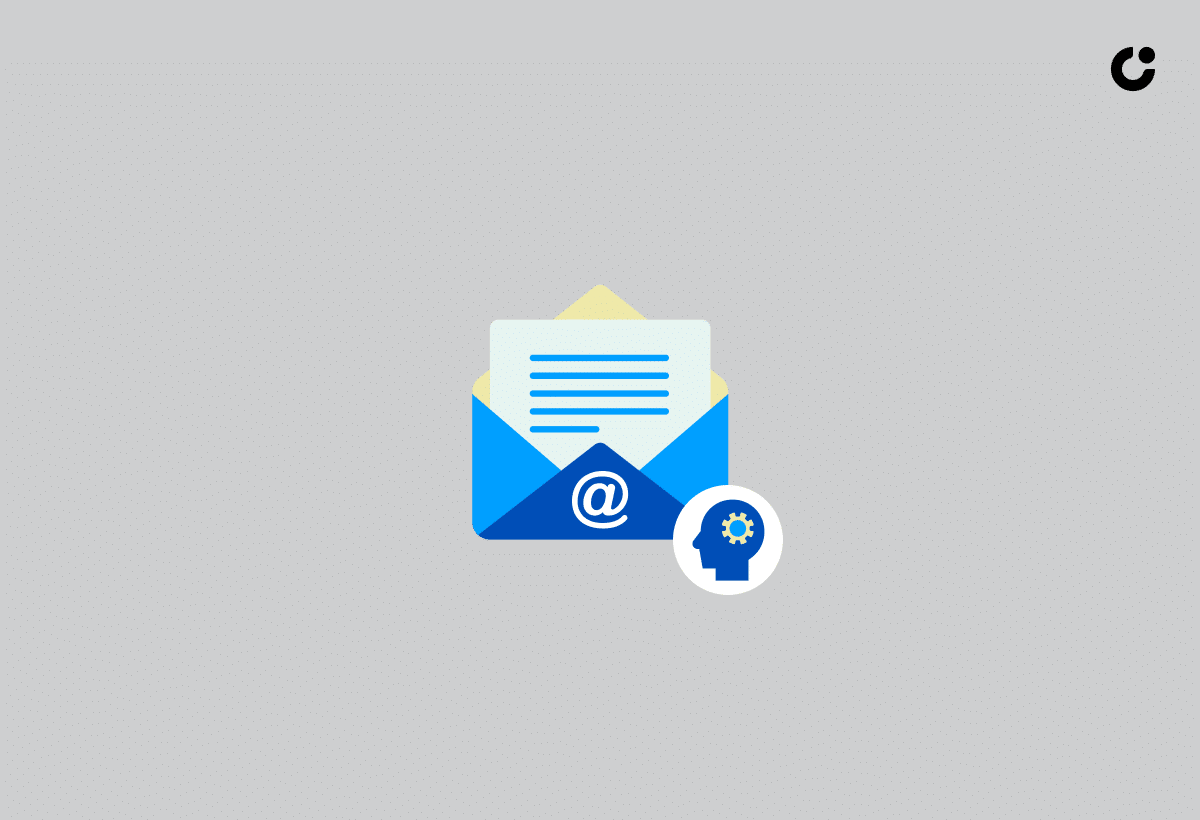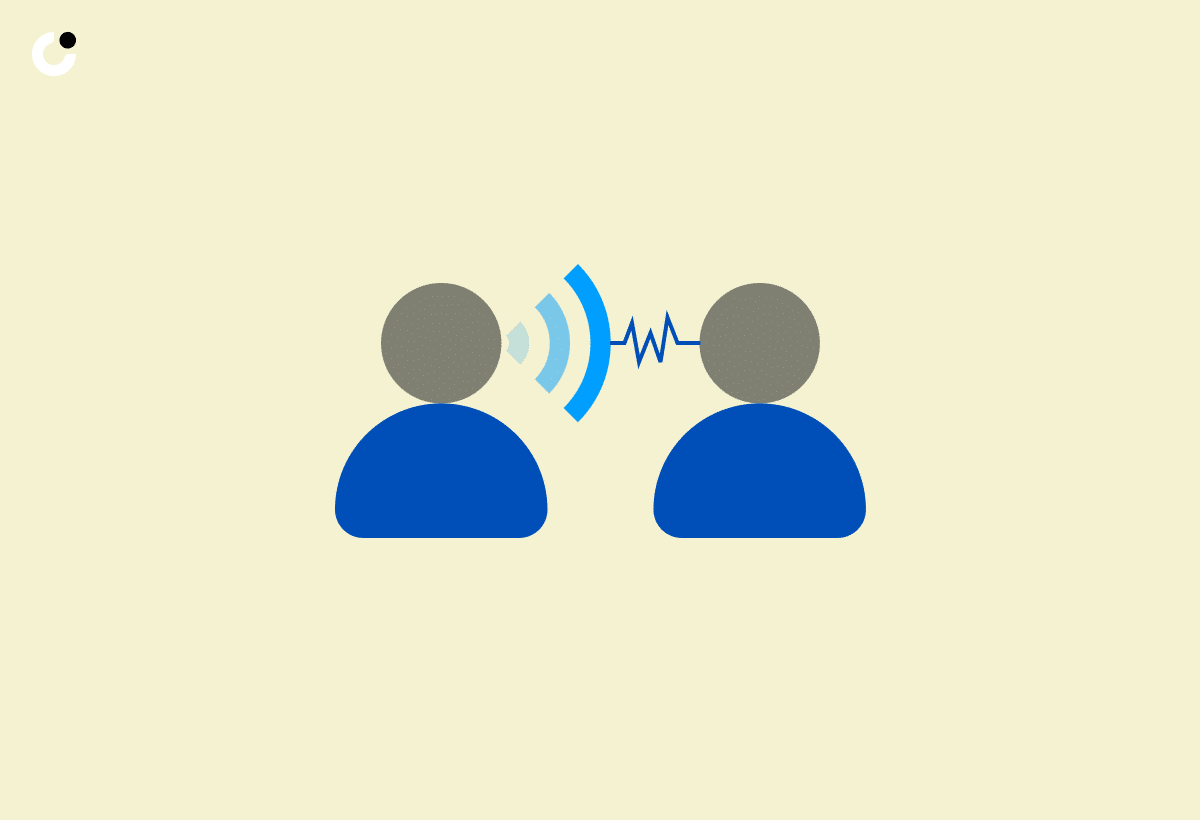Email communication has become a crucial part of our daily interactions, both personally and professionally. Interpreting the tone of emails accurately can be a challenging task. Misinterpreting the tone of an email can have a significant impact on the effectiveness of communication.
Thankfully, advancements in technology have made it easier to analyze email tone using tone checkers. In this article, we will explore the importance of deciphering email tone, the benefits of using tone checkers, and strategies to enhance communication through tone analysis. Let's dive in and improve our skills in accurately inferring tone and intention in emails.
Key Takeaways:
Interpreting tone in emails is crucial for effective communication. Misinterpreting tone can lead to misunderstandings and damage relationships.
Utilizing technology, such as email tone checkers, can help analyze and understand the tone of emails, resulting in clearer and more successful communication.
Inferencing tone and intention in emails requires skills and strategies. It is important to understand the implication and context of the email to accurately decipher the tone and avoid misinterpretation.
Understanding the Importance of Deciphering Email Tone

Understanding the importance of deciphering email tone is crucial in effective communication, as it can impact the overall message being conveyed.
Interpreting email tone accurately is like decoding the underlying emotions and intentions hidden within the text. The tone sets the mood of the communication, shaping how the recipient perceives the message. Words alone may not always accurately reflect the sender's true feelings, making it essential to read between the lines.
Perceiving the tone correctly helps avoid misunderstandings and misinterpretations that can lead to conflicts or strained relationships. It enables the recipient to respond appropriately, fostering a harmonious exchange of ideas.
Challenges in Interpreting Tone in Emails

Challenges in interpreting tone in emails often stem from the inherent limitations of text-based communication, leading to potential misunderstandings and biases.
One of the main difficulties is the absence of non-verbal cues, such as facial expressions and tone of voice, which play a crucial role in face-to-face interactions. Without these cues, it can be challenging to accurately gauge the sender's intended emotion or attitude.
Personal biases can heavily influence how we interpret emails. Our past experiences, beliefs, and perceptions can color the way we read and interpret messages, leading to misunderstandings or misinterpretations.
Email communication lacks real-time feedback, making it harder to clarify intentions or resolve any potential confusion immediately.
Impact of Misinterpreting Tone on Communication

Misinterpreting the tone of an email can evoke varied emotions, affect the interpretation of the message, and hinder effective feedback exchange.
When a recipient misreads the email tone, they may feel frustrated, confused, or even upset, leading to unnecessary stress and misunderstandings. These emotional responses can color the entire interaction and impact the relationship between the sender and the receiver.
Clarity in communication becomes vital to avoid such misinterpretations and maintain a harmonious dialogue. The altered understanding of the message due to misreading the tone can result in actions or responses that were not intended by the sender, further complicating the situation.
Utilizing Technology to Analyze Email Tone

Utilizing technology for analyzing email tone offers a data-driven approach to understanding and enhancing communication dynamics.
By leveraging sentiment analysis tools, individuals and organizations can gain valuable insights into the emotions and intentions conveyed through email interactions. This not only helps in deciphering the underlying sentiments but also enables a more nuanced response tailored to the user's emotions. Such tools facilitate the identification of trends and patterns in email communication, allowing for proactive adjustments to improve overall user experience. With the ability to gauge sentiments accurately, companies can personalize their responses, address concerns promptly, and build stronger relationships with their clients.
Benefits of Using Email Tone Checkers

Employing email tone checkers in business communication can streamline processes, enhance message clarity, and optimize overall sentiment analysis outcomes.
Integrating email tone checkers brings numerous benefits to business communication practices. By utilizing these tools, companies can ensure that the tone of their emails resonates appropriately with recipients, maintaining professionalism and fostering positive relationships. The precision offered by email tone checkers helps in avoiding misunderstandings and misinterpretations, ultimately saving time and preventing potential conflicts. The ability to analyze the sentiment behind the messages allows organizations to gauge the emotional reactions of their audience accurately, enabling them to tailor responses effectively and enhance overall communication efficiency.
Role of Tone Checkers in Business Communications

Tone checkers play a pivotal role in business communications by enhancing customer service interactions, ensuring accurate call transcription, and fostering positive client relations.
By analyzing the tone of conversations, these tools help customer service representatives tailor their responses to match the emotions of customers, leading to more personalized interactions and higher levels of satisfaction. Tone checkers aid in maintaining transcription accuracy by detecting nuances in speech patterns, dialects, and non-verbal cues, which can often be missed by manual transcription methods.
This meticulous attention to detail not only improves the quality of transcribed calls but also minimizes errors and misunderstandings, thereby bolstering overall client satisfaction.
Enhancing Communication Through Tone Analysis

Enhancing communication through tone analysis involves honing interpretation skills, seeking clarification when needed, and fostering a conducive environment for effective dialogue.
Developing strong interpretation skills is essential in deciphering the underlying messages communicated through tone, body language, and subtle cues.
By interpreting these contextual clues accurately, misunderstandings can be avoided, and relationships can be deepened through clear and concise interactions.
Utilizing clarification strategies, such as repeating back key points or asking open-ended questions, can help in confirming one’s understanding and fostering a harmonious exchange of ideas.
Creating an open dialogue where individuals feel comfortable seeking clarification can go a long way in promoting a culture of mutual understanding and respect.
Improving Clarity and Understanding

Improving clarity and understanding in communication involves leveraging sentiment analysis tools, actively seeking feedback, and addressing potential misinterpretations proactively.
Regarding enhancing communication clarity, utilizing sentiment analysis can provide valuable insights into the emotions and opinions behind the messages. By analyzing the tone and sentiment of communications, organizations can better understand how their messages are perceived. Establishing feedback loops can facilitate a continuous flow of information, allowing for adjustments and improvements based on the received feedback.
Addressing misinterpretations promptly is essential to avoid misunderstandings and conflicts. By promptly clarifying any misconceptions or ambiguities in communication, teams can ensure that messages are understood correctly and prevent any potential confusion or disruptions in workflow.
Effective Strategies for Deciphering Email Tone

Deploying effective strategies for deciphering email tone requires considering the sender's relationship, emotional context, and distinguishing between messages from friends and strangers.
Understanding the sender's relationship is crucial as it sets the foundation for interpreting the tone accurately. Emotional context plays a significant role in decoding the message's underlying meaning. Subtle nuances in language and tone must be carefully observed to grasp the true intent behind the words. Differentiating between emails from friends and strangers also adds a layer of complexity, as the communication dynamics vary greatly. When analyzing emails, taking into account these intricacies can help avoid misinterpretations and foster better relationships through clear and effective communication.
Inference and Implication in Email Communication

Inference and implication play pivotal roles in email communication, influencing the reader's understanding, response, and overall message interpretation.
Implications can subtly guide readers' thoughts and decisions, whereas inferences help them read between the lines to grasp the hidden meanings. When recipients form connections beyond literal text, it enriches the context and adds depth to the discourse. The tone, mood, and intentions conveyed in emails heavily rely on how implication and inference are utilized, shaping the perception of the sender and impacting the outcome. Acknowledging these nuances is crucial for ensuring clarity, effectiveness, and positive rapport in professional communication.
Understanding Inference and Implication

Understanding inference and implication involves decoding subtle cues, recognizing underlying meanings, and soliciting feedback to confirm the intended message.
In email communication,
Deciphering implicit cues can be particularly challenging as it lacks the visual and auditory cues present in face-to-face interactions.
For instance, the choice of words, tone, and even punctuation can all convey varying degrees of emotion or emphasis, requiring a keen eye for detail.
When faced with ambiguity, it's essential to seek clarification by politely asking for feedback or additional information.
This proactive approach ensures that the message is interpreted accurately and potential misunderstandings are preempted.
Significance of Inference in Email Tone

The significance of inference in email tone lies in its ability to prevent misunderstandings, address biases, and facilitate clearer communication exchanges.
In email communication, inference serves as a crucial tool for interpreting underlying meanings, intentions, and emotions that are not explicitly stated. By making educated guesses based on context, tone, and previous exchanges, individuals can decipher the true message behind the words, thus avoiding misinterpretations. For more information, check out this external link on Deciphering Sentiments: Understanding the Tone of Emails.
Moreover, inference plays a key role in mitigating biases that may color the perception of the sender's intentions. By acknowledging and accounting for one's own biases and assumptions, recipients can ensure that their responses are fair, balanced, and accurately reflect the sender's intended meaning.
The use of inference in emails enhances communication clarity by filling in gaps, connecting ideas, and providing a more comprehensive understanding of the message. This proactive approach promotes effective two-way communication and reduces the risk of misunderstandings that can arise from incomplete or ambiguous messages.
Strategies to Infer Tone and Intention in Emails

Employing strategies to infer tone and intention in emails involves active listening, contextual analysis, and addressing potential misunderstandings promptly.
Active listening in email exchanges is crucial for picking up on subtle cues that may indicate the sender's mood or intention. By paying close attention to not just the words used but also the overall tone and phrasing, one can better decipher the underlying message being conveyed.
Furthermore, contextual analysis is key to understanding the background or circumstances that may influence the tone of the email. Factors such as past interactions, current events, or the sender's usual communication style can provide valuable insights into the message.
To ensure effective communication and minimize the risk of misinterpreting emails, it is essential to address any potential misunderstandings promptly. Being proactive in seeking clarification or providing additional context can help avoid unnecessary confusion and prevent conflicts from arising.
Key Techniques for Inferring Tone

Key techniques for inferring tone revolve around attentive reading, honing interpretation skills, and decoding underlying emotions embedded in the message.
One fundamental method to grasp the tone of a message involves closely analyzing the choice of words and phrasing used by the author. By paying attention to subtle cues like connotation and context, readers can gain deeper insights into the emotional undertones conveyed. Developing a diverse vocabulary can enhance the reader's ability to recognize different shades of tone, from playful to solemn. Recognizing the author's intention and perspective also plays a significant role in accurately interpreting the tone of a piece.
Avoiding Misinterpretation in Email Communication

Avoiding misinterpretation in email communication necessitates vigilant reading, recognizing personal biases, and refining interpretation skills for accurate message understanding.
One of the key proactive measures to prevent misinterpretations in email exchanges is to cultivate a habit of thorough and attentive reading. By paying close attention to details, nuances, and context in emails, individuals can better grasp the intended message behind the words.
It is crucial to be aware of personal biases that might color one's interpretation of emails. Recognizing and acknowledging inherent biases can help individuals approach email communication with a more neutral and open mindset, reducing the chances of misreading or misinterpreting messages.
Continuous improvement in interpretation skills is another essential aspect of enhancing communication clarity. Practicing active listening and seeking clarification when in doubt can greatly contribute to fostering better understanding in email exchanges.
Developing Skills for Accurate Tone Inference

{
Developing skills for accurate tone inference involves mastering the art of navigating emotional nuances in written communication and sharpening interpretation abilities.
"expanded_content"
Understanding the subtleties of emotional intelligence and applying them to text-based interactions is crucial for effective communication. The ability to decode varied message nuances can enhance one's email interpretation skills significantly. By recognizing underlying emotions conveyed through email, individuals can respond with empathy and clarity, fostering better relationships and reducing misunderstandings. Cultivating these skills can lead to more authentic and harmonious communication, ultimately benefiting both personal and professional interactions.
" }{ "first_sentence"
Developing skills for accurate tone inference involves mastering the art of navigating emotional nuances in written communication and sharpening interpretation abilities.
"expanded_content"
Understanding the subtleties of emotional intelligence and applying them to text-based interactions is crucial for effective communication. The ability to decode varied message nuances can enhance one's email interpretation skills significantly. By recognizing underlying emotions conveyed through email, individuals can respond with empathy and clarity, fostering better relationships and reducing misunderstandings. Cultivating these skills can lead to more authentic and harmonious communication, ultimately benefiting both personal and professional interactions.
" }
Enhancing Inference and Implication Skills

Enhancing inference and implication skills requires continuous practice, seeking clarification when uncertain, and expanding one's interpretive capabilities in email communication.
To enhance these skills effectively, individuals can engage in various exercises such as reading between the lines, paying attention to tone and context, and analyzing subtle cues within the email content. Seeking feedback from colleagues or mentors can provide valuable insights into areas of improvement and offer different perspectives for interpretation.
One strategy for ongoing skill development is to actively participate in training workshops or webinars that focus on enhancing inference and implication proficiencies.
Another essential aspect is to broaden interpretive horizons by exposing oneself to diverse communication styles and cultural nuances, which can help in understanding various implicit messages conveyed through email exchanges.
Practical Steps to Strengthen Tone Inference Abilities

Practical steps to strengthen tone inference abilities include considering the sender's relationship, discerning emotional cues, and distinguishing between messages from acquaintances and unfamiliar contacts.
To enhance your understanding of tone in messages, it is crucial to acknowledge the sender's existing associations with you. The depth of your relationship with the sender can heavily influence the tone perception. Pay attention to subtle emotional cues embedded in the language, such as choice of words, punctuation marks, or use of emojis, to interpret the underlying sentiment accurately. Differentiating between communications from familiar individuals and those from unknown senders is vital in gauging the context and tone effectively.
Frequently Asked Questions
What is the importance of deciphering sentiments and understanding the tone of emails?
Deciphering sentiments and understanding the tone of emails is important because it allows us to accurately interpret the intended message and emotions behind the words written in an email. This is crucial for effective communication and building strong relationships.
How can I decipher the sentiment of an email?
To decipher the sentiment of an email, pay attention to the language and tone used. Look for keywords, phrases, and punctuation that may indicate a positive, negative, or neutral tone. Also, consider the context and relationship with the sender.
Why is it necessary to understand the tone of emails in a professional setting?
In a professional setting, understanding the tone of emails is necessary to avoid miscommunication, conflicts, and misunderstandings. It also helps to maintain a respectful and appropriate tone in all interactions.
Can the tone of an email be misinterpreted?
Yes, the tone of an email can be misinterpreted. Without nonverbal cues, such as body language and tone of voice, it is easy to misinterpret the intended tone of an email. This is why it is important to carefully read and analyze the language and context of the email.
Are there any tools or techniques to help decipher the tone of emails?
Yes, there are various tools and techniques available to help decipher the tone of emails. Some email software has features that analyze sentiment, while others recommend using the "Read Out Loud" function to hear the tone of the email in a neutral voice.
Is it possible to change the tone of an email?
Yes, it is possible to change the tone of an email. If you realize that your initial tone may be misinterpreted or inappropriate, you can edit and revise the email to convey the intended tone more effectively. It is also helpful to read the email out loud before sending to check for any tone issues.

